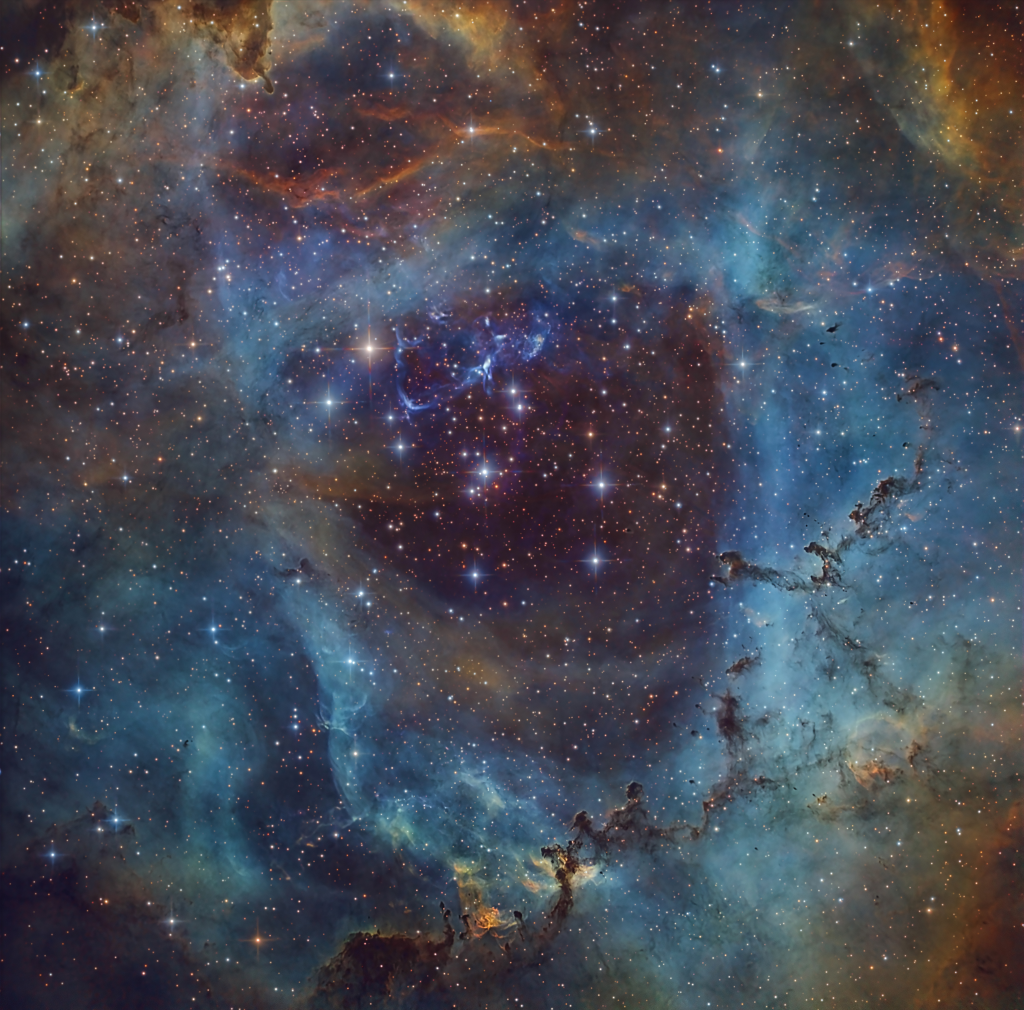2024年2月9日
When Roses Aren’t Red
Image Credit & Copyright: Tommy Lease (Denver Astronomical Society)
Explanation: Not all roses are red of course, but they can still be very pretty. Likewise, the beautiful Rosette Nebula and other star forming regions are often shown in astronomical images with a predominately red hue, in part because the dominant emission in the nebula is from hydrogen atoms. Hydrogen’s strongest optical emission line, known as H-alpha, is in the red region of the spectrum. But the beauty of an emission nebula need not be appreciated in red light alone. Other atoms in the nebula are also excited by energetic starlight and produce narrow emission lines as well. In this close-up view of the Rosette Nebula, narrowband images are mapped into broadband colors to show emission from Sulfur atoms in red, Hydrogen in green, and Oxygen in blue. In fact, the scheme of mapping these narrow atomic emission lines (SHO) into the broader colors (RGB) is adopted in many Hubble images of emission nebulae. This image spans about 50 light-years across the center of the Rosette Nebula. The nebula lies some 3,000 light-years away in the constellation Monoceros.
Tomorrow’s picture: ingenuity
玫瑰不必是红色的
影像提供与版权: Tommy Lease (Denver Astronomical Society)
说明: 并非所有的玫瑰都是红色的,但它们美丽依然。天文影像呈现的美丽玫瑰星云(蔷薇星云)及其他的恒星形成区,色泽经常是红色的,部分原因是因为星云所发出的光,主要来自氢原子。而氢最强的、称为氢α的可见光发射线,就位于光谱上的红光区。然而,发射星云并非只在红光绽放光华。星云内的其他原子,受到高能星光的激发,也会辐射出窄发射线。这幅玫瑰星云的特写影像,把窄带影像映射成宽带色彩,以呈现红色的硫原子,蓝色的氢、及绿色的氧辐射。而这种把原子窄发射线(SHO)映射成宽带色彩(RGB)的方式,常见诸于哈勃望远镜所拍摄的众多发射星云影像。以玫瑰星云位于麒麟座方向约3,000光年远的距离来换算,这幅影像涵盖了玫瑰星云中心约50光年宽的区域。
明日的图片: ingenuity







